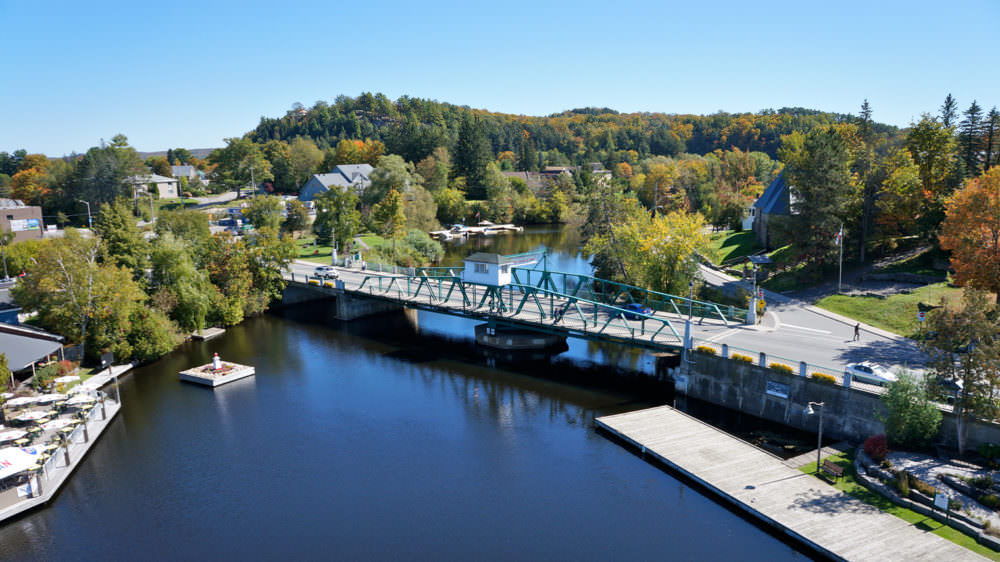Keith Clines, The Huntsville Times
Growth is both inevitable and desirable, but development shouldn’t cost a community the things it has going for it, one of the nation’s leading planners told Huntsville audiences Tuesday.
Cities across the country are losing their character because of growth, said Ed McMahon of The Conservation Fund in Maryland. He said good growth depends on where you put it, how you arrange it and what it looks like.
“How much it costs is the second most important question,” McMahon said. The most important question is what should we do. Money always follows good ideas.”
McMahon is director of the American Greenways Program at The Conservation Fund, which has helped preserve 3 millions acres in the past 10 years.
McMahon, a Bessemer native, spoke to the Huntsville Rotary Club at a Tuesday luncheon. He later met with The Times editorial board and with local leaders at the Lockheed Martin auditorium.

Among the estimated 75 people at the Lockheed Martin presentation were Huntsville Mayor Loretta Spencer, City Councilman Bill Kling, several Huntsville Planning Department planners, and representatives of the Madison County Commission, the Land trust of Huntsville and North Alabama, the Historic Huntsville Foundation, the Huntsville Housing Authority, architects and developers.
Spencer said after the presentation that she heard several interesting things. Already, she has city planners reviewing the sign law for possible changes to make signs smaller and not as tall. Spencer said she is also interested in having cellular telephone towers disguised as trees and in allowing loft apartments downtown without requiring a variance.
Kling said he’s interested in more landscaping on city streets and in establishing a historic district in the Huntsville Park area near Drake Avenue and Triana Boulevard.
“It would be nice to see what incentives we could find for downtown Huntsville and Huntsville Park,” Kling said.
McMahon was impressed with the area’s scenic views, greenways, downtown, the historic districts, the existence of the Land Trust and the outlawing of portable signs.
“By Alabama standards, the character of development is higher here,” McMahon told the editorial board. “On the other side of the coin, Huntsville is trying everything it can to be Anyplace, U.S.A.”
He said the city has no long-range plan and apparently no shared vision of what Huntsville should be.
“Very few people are asking what you want Huntsville to look like in 20 years,” he said. “I can tell you what it will look like. It will look like New Jersey with mountains.”
“Almost as important as development regulations, he argued, cities need incentives and education programs to direct the right kind of development. Neither Huntsville’s downtown nor Twickenham Historic District could be built today because of zoning regulations, he said.
Development that improves a community, he said, can be done in a way that is less costly to developers and more friendly to the environment.
For example, streets that are 24 feet wide instead of 40 feet wise lower development cost because streets are the most expensive part of a subdivision. The lower cost can be passed on to home buyers. The narrower street is also better environmentally because there’s less erosion and storm water runoff, and it’s safer because motorists will drive more slowly.
Another possibility is building golf-course-type developments without the golf course. That allows people to buy homes around an open space and is cheaper for the developer than building a golf course.
McMahon said that the city law in Gaithersburg, Md., limits the footprint of a commercial building to 70,000 square feet with no height limit.
“If Wal-Mart wants a 140,000 square-foot store, it has to be two stories,” McMahon said.
Huntsville planners have drafted a proposed amendment to the neighborhood business zoning law that limits the size of commercial building based on the street classification they are on. Some opponents say the proposed rule could hamper commercial development in the city.
Lincoln, Nebraska, has the most vibrant downtown in the Midwest because of one change, McMahon said. The city changed its zoning law to require all multiple-screen movie theaters to be located downtown. There are now 33 theater screens downtown, and restaurants and other commercial activities have followed, he said.
Big trees improve the value of property more than all other landscaping, but trees of any size and landscaping are good for businesses.
“The image of a community is fundamentally important to its economic well-being,” McMahon said.
Communities, including Huntsville, have to preserve what makes them different, what provides people with a sense of place. The result is more tourism.
“If all places look alike, there’s no reason to go anywhere,” McMahon said.
Preserving the historical past is good for the heart, soul and pocketbook of any community, he said.
Examples are the Riverwalk in San Antonio, the Pike Place fish market in Seattle, the art deco historic area of South Miami Beach, Florida, and Camden Yards baseball stadium in Baltimore.
Another thing cities can do is push national chain businesses to build something else other than their standard building. Fast-food restaurants, in particular, can go in buildings that reflect the style of the area, such as New England or the Southwest. The chains will do what they must to locate in a profitable location, McMahon said. “If you ask for off-the-shelf, cookie-cutter buildings you’re going to get them 100 percent of the time,” he said.
Growth for the sake of growth can lead to poor growth.
McMahon warned that people who oppose all growth don’t usually help their cause overall because they alienate the public. But, long-range conservation plans with dedicated open space can help alleviate the perception that all open land is available for development.
